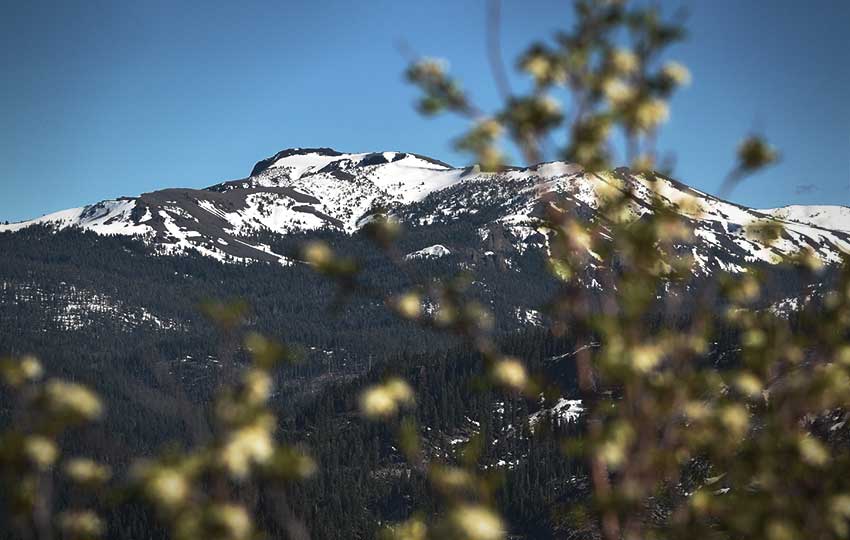
Many people equate “adventure” with adrenaline-producing activities involving high risk and steep terrain. Or, they believe adventure can only be found through extended world travel and exposure to exotic locales. This is simply not true. It’s like saying that the cosmos is more expansive than the subatomic level of life. As above, so below … no?
So, in many peoples’ minds, taking a 30-minute walk through a local park seldom qualifies as being a full-blown adventure.
Support Tahoe Trail Guide with a financial contribution via PayPal (single contribution) or Patreon (reoccurring contributions). Your support of Tahoe Trail Guide is very much appreciated!

However, when it comes to going on an adventure everything is relative. And it’s often just a matter of time that dictates the level of immersion and intensity you’ll experience on your adventure.
The point I’m trying to make is that you don’t have to go full dirtbag, hiker trash, or van life in order to cultivate adventure in your daily life.
You don’t have to sell all of your worldly possessions and then hit the road to curb your “wanderlust” desires just to say you live an adventurous life.
In reality, most people don’t have the time to take a 6-month sabbatical from life, for example, to thru-hike the Pacific Crest Trail or backpack across Southeast Asia.
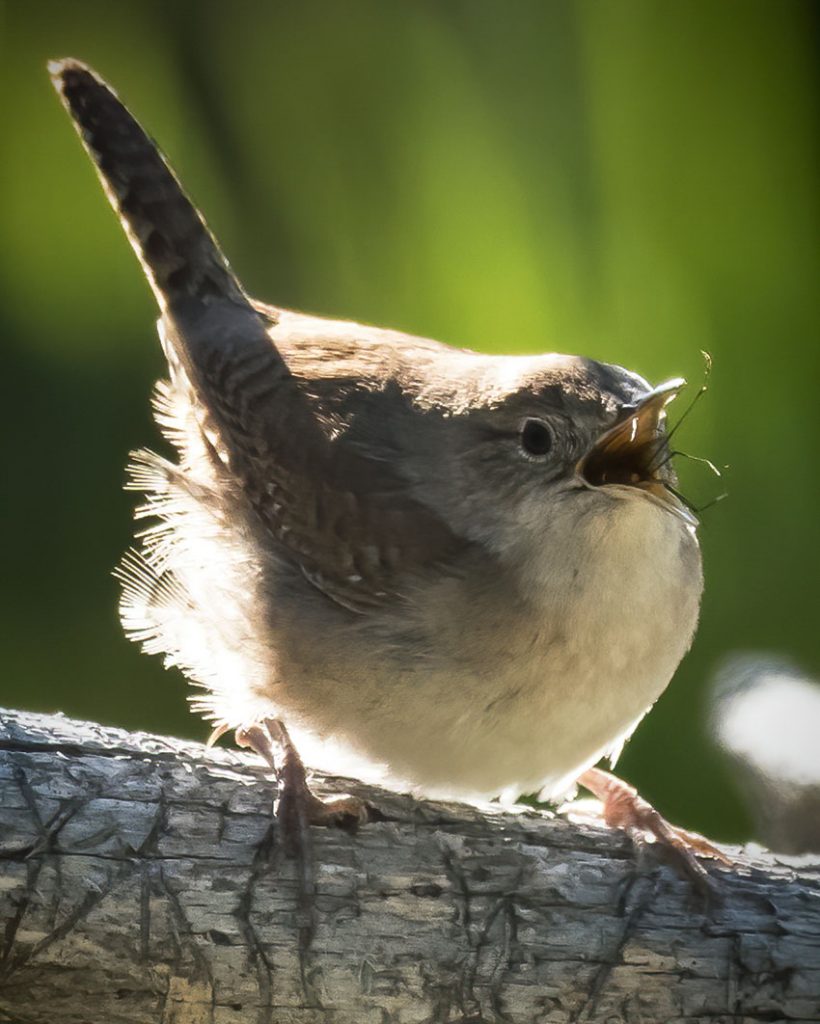
Adventure Takes All Forms, Great and Small
It’s true that I did embark on larger-scale adventures in my younger days. Arguably my biggest adventure was a 1999 thru-hike of the Appalachian Trail. I’ve also run marathons, bicycled across a couple of different states, thru-hiked the Tahoe Rim Trail, and spent a dozen years training in the Japanese martial art of Aikido earning a second degree black belt.
Completing each of those big adventures required different levels of commitment. And often I had to shoehorn their execution between life commitments, such as graduating from college and/or changing careers.
Without question, all of the aforementioned experiences were incredible and had profound impacts on my life. However, in many ways they just weren’t sustainable, and much of the time were downright exhausting. The sheer volume of hours per week required to prepare for and execute a large-scale adventure basically means that you won’t be doing much of anything else with your time.
More interesting, however, is that upon completion of your big adventure returning to “civilian” life will present significant challenges. You’ll have become a little more unrelatable to your friends and family. You won’t care about buying and owning more stuff. You’ll realize how soft society has become knowing that everyone has instant access to any modern day convenience their heart desires.
Essentially you’ll have taken the red pill, so you’re going to have to reconcile the two worlds (i.e. life on the trail/road and life in a developed area).
It’s not my intention to sound cynical or bitter or to discourage you from going on a big adventure. I’m simply emphasizing the point that after completing a large-scale adventure or two, for better or worse you won’t see life the same.
If that big adventure is your life’s mission or passion, so be it.
For the rest of us, though, what’s the alternative?
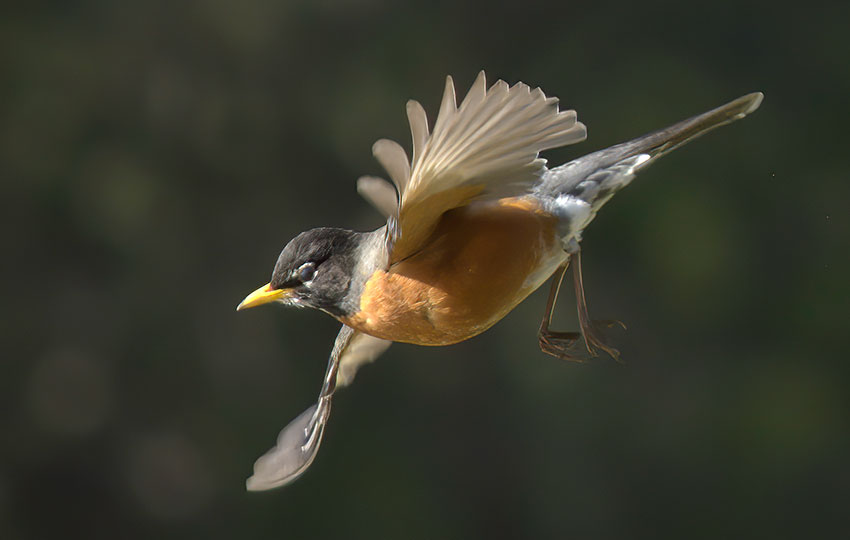
Redefining what Constitutes an Adventure
I’ve always used the term “adventure” broadly, because I believe at its essence adventure simply equals exploration. And at the core of every exploration lies curiosity – the compulsion to seek out the answer(s) to a burning question.
I’m not just talking about performing a quick Google search on a smart phone. Nor am I saying to just watch a quick YouTube video about the subject in question. Any armchair intellectual can do that. What I’m talking about is immersing one’s self in an experience. Regardless of time-frame, give yourself to the thing in order to extract every possibly emotion, sensation, or bit of knowledge from the activity.
To know a thing firsthand is to truly know a thing.
So, whether your adventure lasts for 30 minutes or 30 years, be present and in the moment.
For the purpose of this article, I want to draw attention to smaller adventures in shorter durations of time at more frequent intervals.
For example, during the 2018/19 Snowpocalypse winter at Lake Tahoe I cross-country skied 136 days. During the course of that season I logged over 670 total miles and 80,000 feet of total elevation gain. Crunching the numbers, that only equates to roughly 5 miles and 600 feet of elevation gain per ski session.
Those season totals sound big, but the daily averages are not extraordinary. However, this was the point of my approach to the season.
Frequency over duration.
Lifestyle versus that one time I did that one big thing.
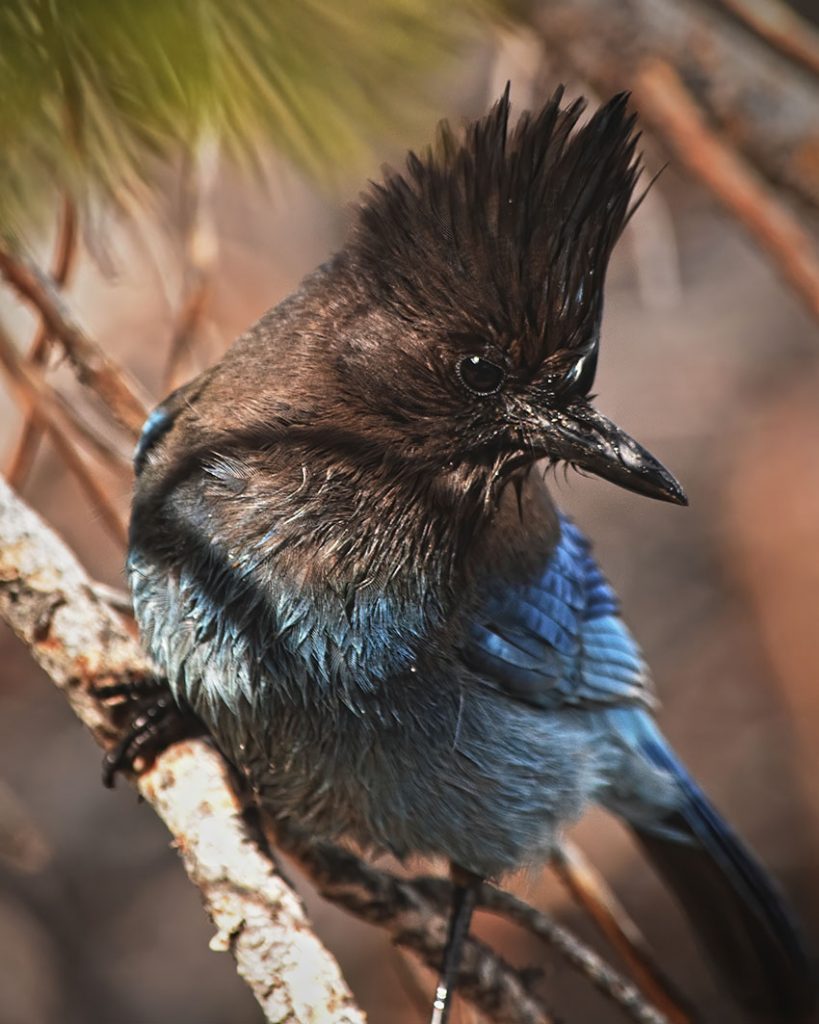
Micro-Adventures, Daily Adventures, and 24-Hour Adventures
There’s no question that my 2018/19 cross-country ski season was a huge commitment. However, it was primarily based on whether or not I had time to complete my work. And, to a lesser degree, it depended upon the snow conditions. You’d think it would be more based on the weather and snow conditions. However, any day of cross-country skiing is a good day of skiing!
I intentionally didn’t have a routine skiing schedule. Instead, I wanted to learn to adapt to any environment and, ultimately, become a well-rounded skier.
I skied under bluebird skies and during blizzards. Powder days and skiing across wind-scoured and icy snow was equally fun. I skied at groomed resorts and broke my own trail in fresh snow. Sometimes I skied first thing in the morning, while other days I skied in the late afternoon or evening. It didn’t matter when I went skiing because it was all adventure.
A rewarding byproduct of lacking a structured schedule is that it required being adaptable and willing to subject myself to adverse conditions. I can’t think of an experience more adventurous than that!
Since I opted to ski shorter distances more often, I actually had time to go to work, complete side projects, and participate in other extracurricular activities with friends and family.
Over the past few years I’ve also opted for short, overnight backpacking trips instead of full weekends or longer. Usually those quick trips revolved around having a friend drop me off at a trailhead within 20 miles of my home. Then, I would hike to a peak for the sunset, camp overnight, and walk home the following morning after the sun rose. All within 24 hours.
You could call these shorter adventures micro-adventures, daily adventures, and 24-hour adventures.
And, I realize most people don’t live so close to wildlands, but you understand my point … yeah?
Adventure doesn’t have to be a huge production.
You can work adventure into your daily routine and, in doing so, break that routine!
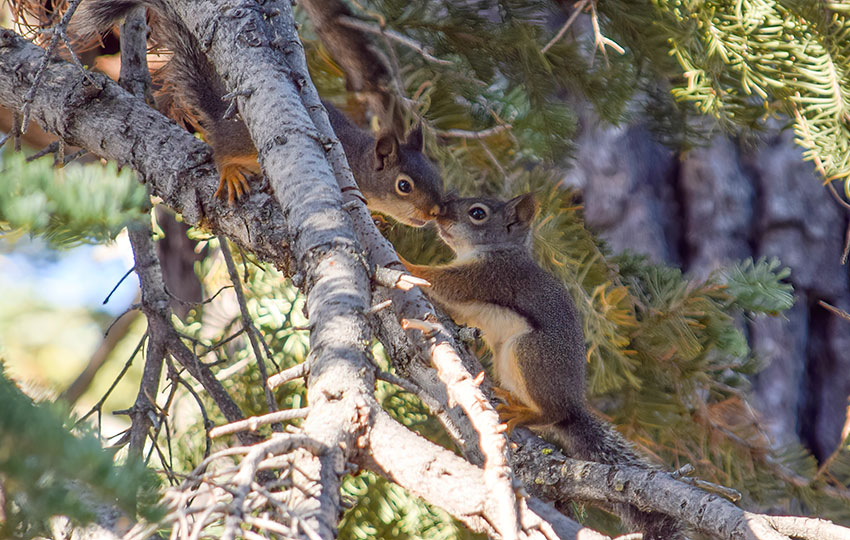
Chasing Butterflies
I often greet people at both of my seasonal outdoor recreation jobs by first asking … What kind of adventures have you been on lately?
That questions usually elicits a chuckle by the person. And, then, a long pause as they try to recall a recent memorable experience.
The reason I ask the question is to help redefine peoples’ interpretation of an adventure.
Adventure should be an integrated part of your life. It shouldn’t be something you do for two weeks out of the year. And, you shouldn’t have to make a huge production out of it.
Most of these suggestions for cultivating adventure in your daily life are probably not new to you. However, a simple prompt or being given “permission” by a stranger is all it takes to light the fire.
This list of suggestions are ways of extending an experience on the trail to your everyday life. At least, that’s how I view them!
- Take a roundabout way when returning home in order to explore other areas and to break up your routine.
- Choose alternative modes of transportation to and from work or school.
- Leave the house early enough to catch the sunrise before your daily activities.
- Take your time when leaving from work or school to catch the sunset.
- Find on a map the most odd or uniquely named city, town, or location nearby and travel to it.
- Treat adventure as a lifestyle. Take multiple shorter trips each year rather than one big vacation. Although this is less immersive, it’s more affordable and easier to plan
- Camp in your backyard. This is a great way to work on your basic backpacking skills in a controlled environment. You can also test out new (or new to you) gear in that same environment.
- Take some modified “picnics” by cooking your meal with a camp stove. This is another way to gain experience with your stove in a controlled environment. That said, first determine that using an open flame such as a camp stove is permitted wherever you’re picnicking.
- Learn about the history of where you live by visiting historical societies, museums, and libraries.
- Engage in rural, suburban, or urban hiking (depending on where you live) rather than driving around to explore.
- Acquire new skills by attending classes, seminars, and other educational courses. There are tons of online options that you can perform on your schedule.
- Implement a “framework” or a set of rules for performing an activity or task. See where it takes you! For example, focus on birds for one hike and then bugs or wildflowers on the next.
- Document your experiences with photos, drawings, and journaling. But, wait until you’ve returned home to edit and/or post your findings. Don’t take yourself out of the moment while trying to post your images in real-time.
- Become an active steward of the land by volunteering with outdoor organizations or trail crews. Or, simply make it a habit to pick up trash from the trail whenever you get out. I always carry with me a plastic bag whenever I hike in order to collect trash.
- Log less miles and more identifications. Then, post your findings to an online naturalist website such as iNaturalist.org.
- Treat the outdoors and the world around you as an interactive classroom.
- Capture imagery of the ordinary, but try to bring out its extraordinary aspects or features through composition, light, and color.
Chase that butterfly, bird, or squirrel to see where it’s going and what it’s up to. However, don’t actually catch it and be mindful not to harass it. That critter knows you’re there, so be respectful of its personal space.
Remember that wildlife isn’t just wallpaper. Everything is out there actively engaging in life – you should be, too!
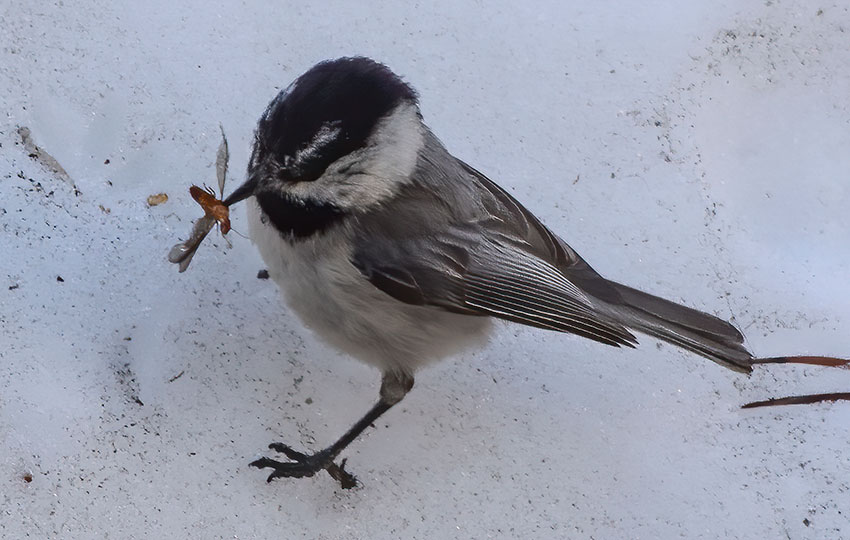
I’m sure that most of you have way more life commitments than I do. Regardless, adventure is all around you.
The central theme of embracing small-scale adventure is to create a lifestyle filled with meaningful interactions and experiences. Begin to ask and answer those burning questions you have about life (i.e. adventure!).
All of the photos in this article feature common species of wildlife found in the Lake Tahoe region. But ordinary doesn’t mean they’re any less extraordinary when given the proper treatment.
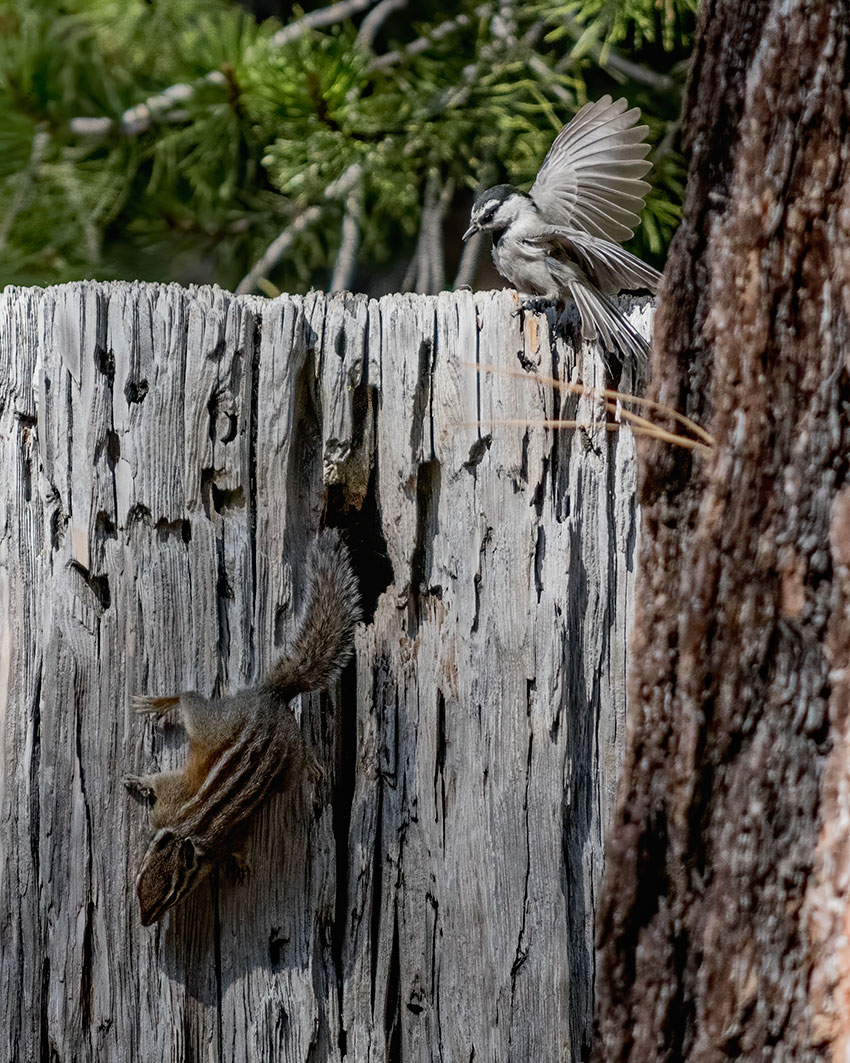
Articles About Lake Tahoe Plants and Wildlife
The following Tahoe Trail Guide articles feature information, history, and stories about the various forms of plant and wildlife that you can find at Lake Tahoe.
Lake Tahoe Wildflowers
- Two Major Factors that Determine Peak Bloom Times for Wildflowers at Tahoe
- Tips for Finding Wildflowers at Tahoe
- The Sinister Mustard Flower Rust
- Big Yellow Wildflowers with Big Green Leaves called Woolly Mule’s Ears and Arrowleaf Balsamroot
Trees of the Sierra Nevada
Birds of Lake Tahoe
- The Tree Cleaving Pileated Woodpecker
- How Woodpecker Contribute to Healthy Forests at Lake Tahoe (and other fun facts)
Fish of the Sierra Nevada
Creating an Immersive Outdoor Experience
- Cultivating Adventure in Your Daily Life
- Deepen Your Outdoor Experience by Documenting Your Nature-Related Observations
- Considerations and Reasons for Doing a Big Year
I’d love to hear about the ways in which you cultivate daily adventure in your life.
Post your ideas in the comment section below 🙂
Really great article. I really appreciate your article. Thanks a lot for your info. Keep going.
Thanks so much for your kind words, Daniel. I’m glad you enjoyed the article, and hope it helps you experience adventure a little more your in your daily life 🙂
I like your ideas about redefining adventure and making experiences richer and more meaningful by bringing in greater awareness and a sense of curiosity. I’ve found I can satisfy my need for adventure by going out for day hikes every weekend and am lucky enough to live in a place I can do that.
Very cool, Leah 🙂
That’s kind of what I’ve been doing a lot these past couple of years — shorter hikes more frequently. For me, I’ve just come to the realization that my daily quality of life (which includes shorter adventures) is far more important than taking big, extended trips. And the logistics are a heck of a lot easier when I just decide to take a short walk in the forest after work 🙂